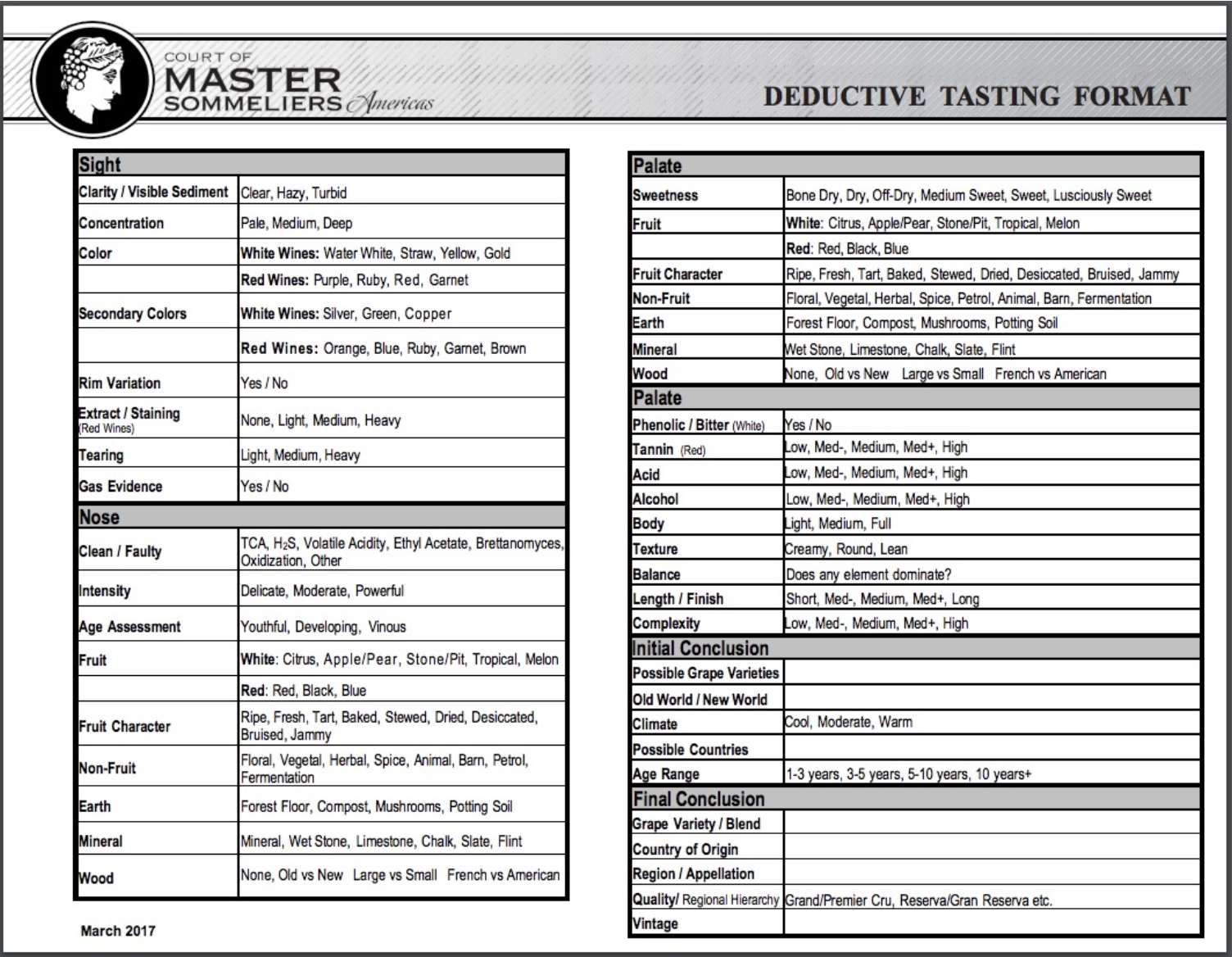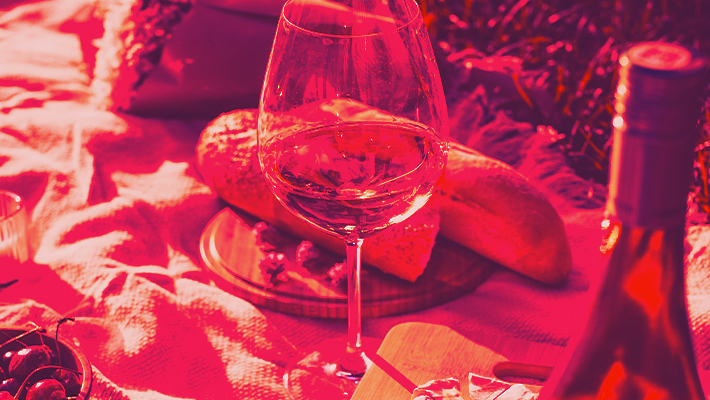I’ve been writing about wine for quite some time now, and aside from the regular inquiry of which bottles to buy (and where), I’ve noticed that my friends and family are most curious about how to taste wine like a pro. While every writer/sommelier has their own unique regimen for how to taste, I’ve found that a few solid steps go a long way. Best of all, they’re not as complicated as you may think.
If you’re serious about leveling up your wine tasting game, here are my personal go-to tips. They won’t take a lot of money or time, all you’ll need is some paper (or a notes app). And internet access… which you clearly have… because you’re reading this.
Get In the Zone to Sip Thoughtfully

To really get in the proper mindset to taste—or do anything mindful, including writing—I find that setting myself up for success is key. For me, this means eliminating all distractions. Setting up my tasting space simply means turning off the TV/music, ensuring that the room has enough light, and removing any potentially distracting aromas (food, coffee, or candles) from my surrounding area .
Follow the “5-S” Rule

While it may sound silly, the “5-S” rule has long been used to build the tasting foundation for sommeliers, retailers, and industry folk alike. The breakdown is quite simple: See, Swirl, Smell, Sip, and Spit. First, start by taking a look at your wine and noticing its core color, as well as any potential rim variation. This is best done by looking down through the glass (holding it horizontally) over a white sheet of paper or table, rather than holding it up in front of you, which can distort the wine’s color, should anything dark-hued be behind it.
The second step is to give the wine a swirl. This isn’t simply for aesthetics, but rather to introduce oxygen into the glass, which opens up the wine’s aromas – which leads us to our next S, smell. Stick your nose as far into the glass as possible and inhale deeply. The following step, sipping, is pretty obvious, followed by spitting, which will both prohibit you from getting drunk, as well as allow you to gauge the wine’s finish.
Pro Tip: Use a good glass! The vessel in which you taste your wine absolutely makes a difference. My go-to is always Zalto Universal, but these can be pricey. Spiegelau and Schott Zwiesel are also two beloved industry brands (the latter of which you can get for around $10 a glass!)
Build Your Vocab With the Help of Expert Sources

Now that you’ve got the mechanical steps down, let’s look a bit deeper into the nuanced part of the tasting. Understanding what you’re smelling and tasting can be seriously overwhelming at first. When I first began wine tasting, I’d Google the wine in my glass and see if I could find reviews, critics’ write-ups, or tech sheets with tasting notes on the wine to start. While this may seem like “cheating” at first, I found this to be a solid way to build a vocabulary bank of tasting notes and aromas at a time when I couldn’t formulate my own. With each tasting, your brain will become more equipped to nail down specific aromas and flavors without having to cite sources – this is what we like to call palate training. These expert guides will also help you to build a vocabulary around the structural components of wine, including acidity, tannins, and overall structure.
Additionally, being in tune with aromas and flavors in your daily life is also key. A simple trip to the grocery store can provide a ton of hands-on practice. Simply walk through the produce aisle, pick up fruits and veggies, and give them a sniff. Same goes for simply walking around your home base. Rather than mindlessly wandering, really take in the scents around you – do you notice freshly cut grass? Gasoline / petrol? Barnyard, manure, or pavement that’s been freshly rained on? Good, you’re building your olfactory capabilities every time you leave your house!
Beyond specific aromas and flavors, I’ve also found (and still find) that using the Court of Master Sommeliers grid is wildly helpful in building a vocabulary around other facets of tasting. Take a look here – I still use this when practicing.

Take Notes (Seriously)

Taking notes is not only key in remembering the exact notes you tasted in a wine, but also helps to create a catalog of all wines tasted in recent years. Rest assured, there are plenty of times that I’ve forgotten to document a wine that I’ve tasted, but in times when I’m curious to remember a Gamay that I love, I’m never more grateful than for my tasting excel sheet.
How detailed you want to make your sheet is up to you, but I recommend at least noting the producer, specific bottle/vintage, and any standout notes on the wine. Put an asterisk next to it if you particularly loved it for future reference – your upcoming dinner parties and weeknight happy hours will thank you! For tasting practice, you can also print out a bunch of the CMS grids above and simply run through the chart at home. This is how we used to do it at a retail store where I formerly worked.
Compare and Contrast

Whether you write this down or not, consider the similarities and differences of the wine you’re tasting with other wines from its region / produced from said grape variety. Not only will this send your tasting memory bank into overdrive but it’ll also help you build a solid vocabulary beyond simple tasting notes.
For example, if you’re tasting a Pinot Noir from the Central Coast of California, think of how it compares to other Pinot Noirs from within that producer’s lineup, as well as other Pinot Noirs from the region and beyond (Sonoma County, Burgundy, and more). That’ll help you form comparisons about acidity, structure, and tannins.
Continue to Dive Down the Rabbit Hole

The most important tip of all?
Continue to explore and discover as many wines as possible. Simply put, the more wines you taste, the stronger you’ll become at the craft. If the opportunity presents itself, dive in—even if you think you’ll hate the wine. The best case scenario is that you come out of the experience able to identify some traits about the wine, as well as formulate a personal opinion on it.
Oh, and most importantly — be patient with yourself! Don’t get intimidated and leave the ego at the door. After all, wine is supposed to be enjoyable, even from an educational standpoint. Cheers!







